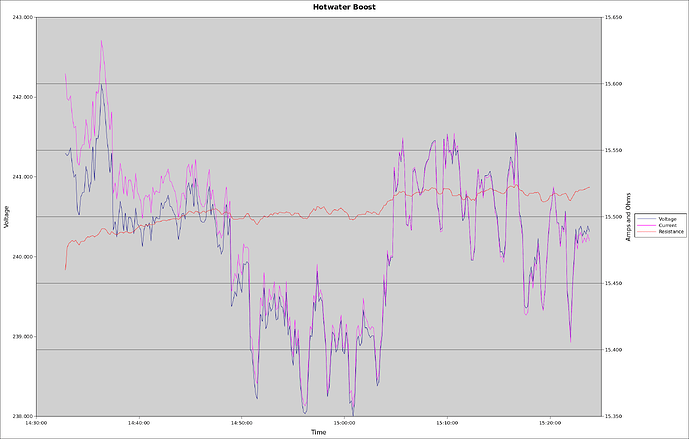Welcome, David, to the OEM forum.
No, but I’ve put some thought into the subject, and from a design point of view, this configuration makes life a lot simpler, even though the cost in losses is somewhat higher. One design I’d heard a fair bit of detail about does the switching at a.c, with the load fed by a.c, meaning the flyback ‘diode’ has to be a pair of active devices and timing between the series path and the shunt path becomes super-critical - overlap the conduction and you short the supply, underlap (is this a word?) and you leave the smoothing inductors open-circuit. Either way, something gets destroyed.
If the output is d.c, I think your suggestion of a d.c. coupled Hall effect device is the only realistic alternative to measuring the a.c. side with a conventional c.t. If the immersion heaters are “exclusive or”, then can you derive a digital signal to indicate which is receiving power - a neon across the immersion feed and a light-dependent resistor, for example?
But it doesn’t have to be a d.c. output to the immersion heater. If you (it’s hard to put this in words) connect the load and the a.c. terminals of the bridge rectifier in series, with the active switch shorting the d.c. terminals of the bridge, then your load sees a.c (kinder on the thermostat) and the switch sees only unidirectional current and voltage, and the flyback problem is simplified. Have you checked the actual output waveform? In this case you see a pwm chopped but probably smoothed a.c. wave, so the voltage amplitude changes. Note the neutral is then common to input and output, which it won’t be with your suggestion - this is likely the quickest way to check.
With either of these ‘d.c. switch’ configurations, you have probably 3 semi-conductor devices in series instead of one, hence the increased losses.
I’d suggest running a Spice simulation of both configurations so that you know the voltages and waveforms to expect.
One further consideration if the output is d.c, how are you going to measure the voltage to compute power and energy? You can’t use your Hall effect device because they cost too much current, and you have isolation problems with anything else.
